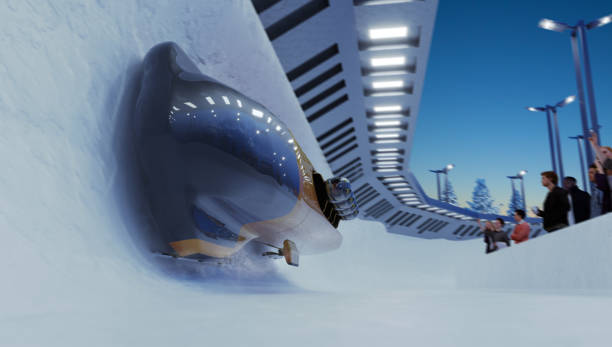The Intriguing World of Bobsledding: From Its Origins to Modern Day Glory
The thrill of speed, the test of precision, and the teamwork it demands—bobsledding is a sport that embodies the essence of winter sports. As a spectator, it's mesmerizing to watch the four-person bobsled barrel down the icy track at breakneck speeds. As an athlete, it's a test of nerve, strength, and agility. This article delves into the enthralling world of bobsledding, tracing its origins, shedding light on its evolution, and exploring its current trends.

A Journey Through Time: The Origins of Bobsledding
In the late 19th century, the Swiss resort town of St. Moritz became the birthplace of bobsledding. It began as a winter pastime for the wealthy British tourists who frequented the town, evolving from sleds used to transport goods. The first bobsled tracks were treacherous, winding down public roads and often causing accidents. But the thrill of the sport quickly caught on, and by the 1920s, bobsledding had been included in the Winter Olympics.
The Evolution of the Bobsled and the Track
Bobsledding has seen significant advancements in both sled design and track construction. Initially, sleds were made of wood, but the quest for speed led to the use of lighter and more durable materials like steel and fiberglass. Modern bobsleds are marvels of engineering, designed for aerodynamics, stability, and speed.
Track construction has also evolved, with current tracks featuring refrigeration systems to maintain optimal ice conditions. The layout has been standardized to reduce risk and ensure fair competition, with every track having a similar combination of straight sections, curves, and chicanes.
The Thrill and The Challenge: What Makes Bobsledding Unique
Bobsledding is unique in its demand for a diverse range of athletic skills. The initial push-off requires explosive strength, akin to that of a sprinter. The driver must possess the precision of a Formula One racer to navigate the sled through the icy twists and turns. And the team must work in perfect harmony to shift their weight and maintain the sled’s balance.
Current Trends and Innovations in Bobsledding
Like other sports, bobsledding continues to evolve, driven by advancements in technology and training methods. One trend is the increased focus on analytics, using data to optimize everything from sled design to racing lines. Training methods have also adapted, with teams incorporating sport-specific workouts and even virtual reality to simulate race conditions.
The Future of Bobsledding: A Look Ahead
As we look to the future, bobsledding continues to captivate audiences with its mix of speed, precision, and teamwork. Efforts to make the sport more accessible are underway, with countries that lack winter conditions building indoor tracks. The continued evolution of technology and training methods promises to push the boundaries of what’s possible in this exhilarating winter sport.
In conclusion, bobsledding is a captivating sport that has come a long way from its humble beginnings in St. Moritz. Its unique blend of athletic demands, coupled with the ongoing evolution of technology and training, ensures it remains a thrilling spectacle in the world of winter sports. As we move forward, the world of bobsledding holds exciting possibilities, promising to continue its tradition of speed, precision, and teamwork.






